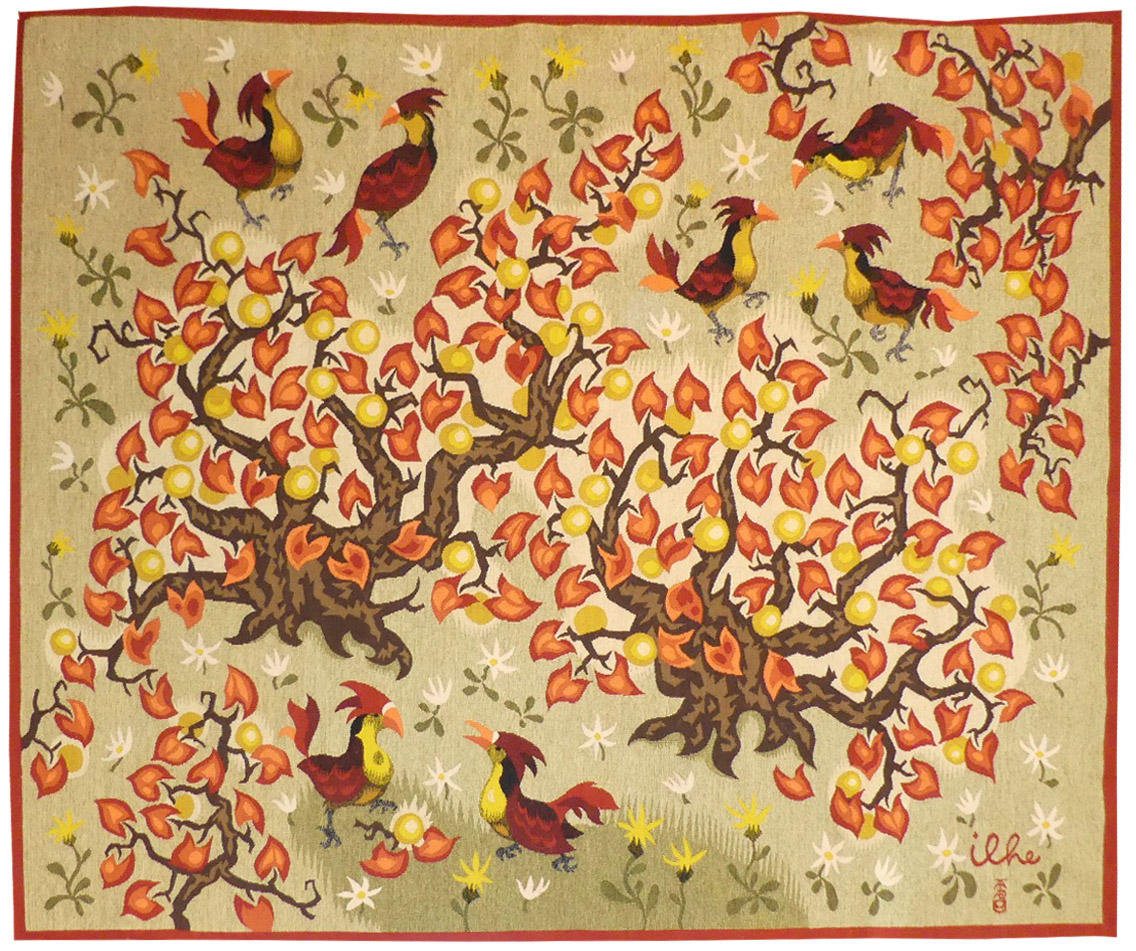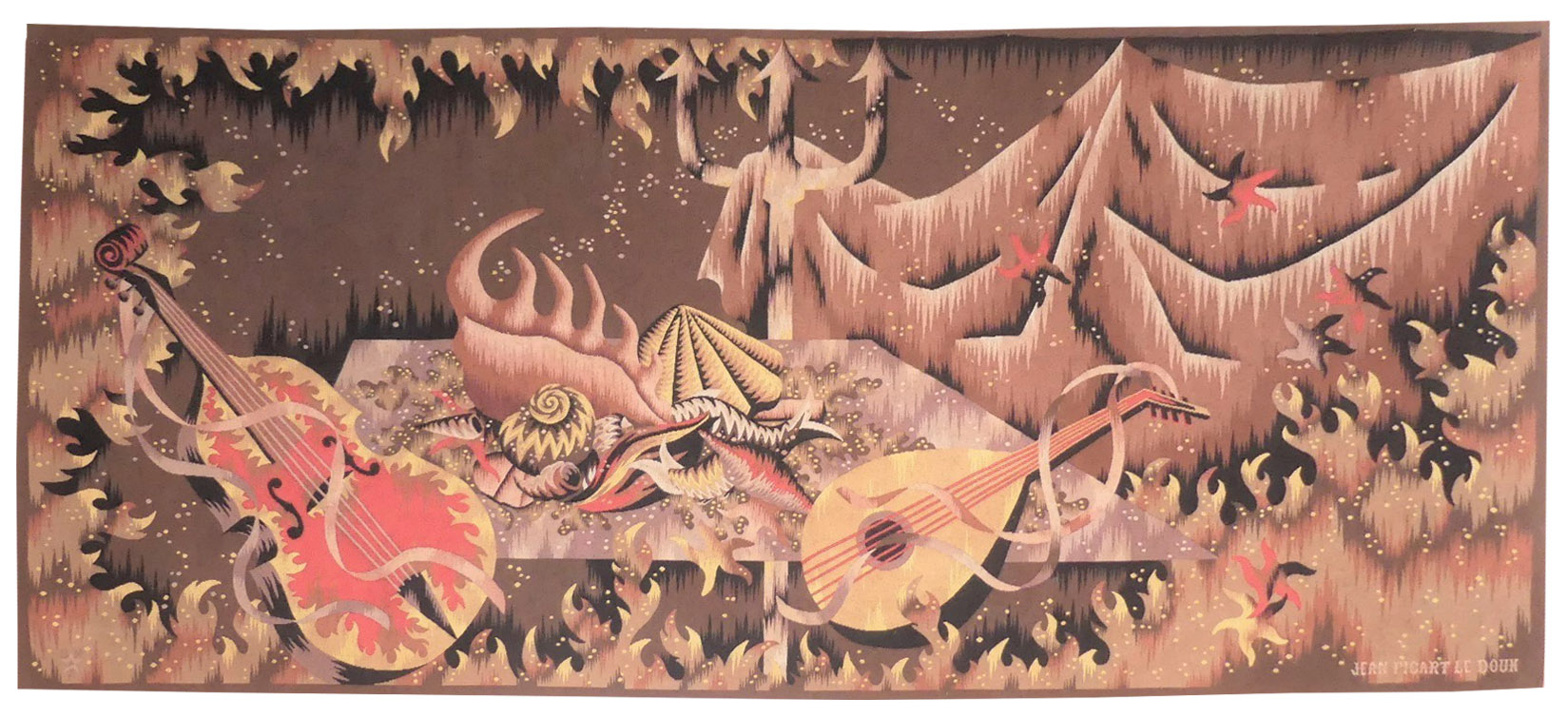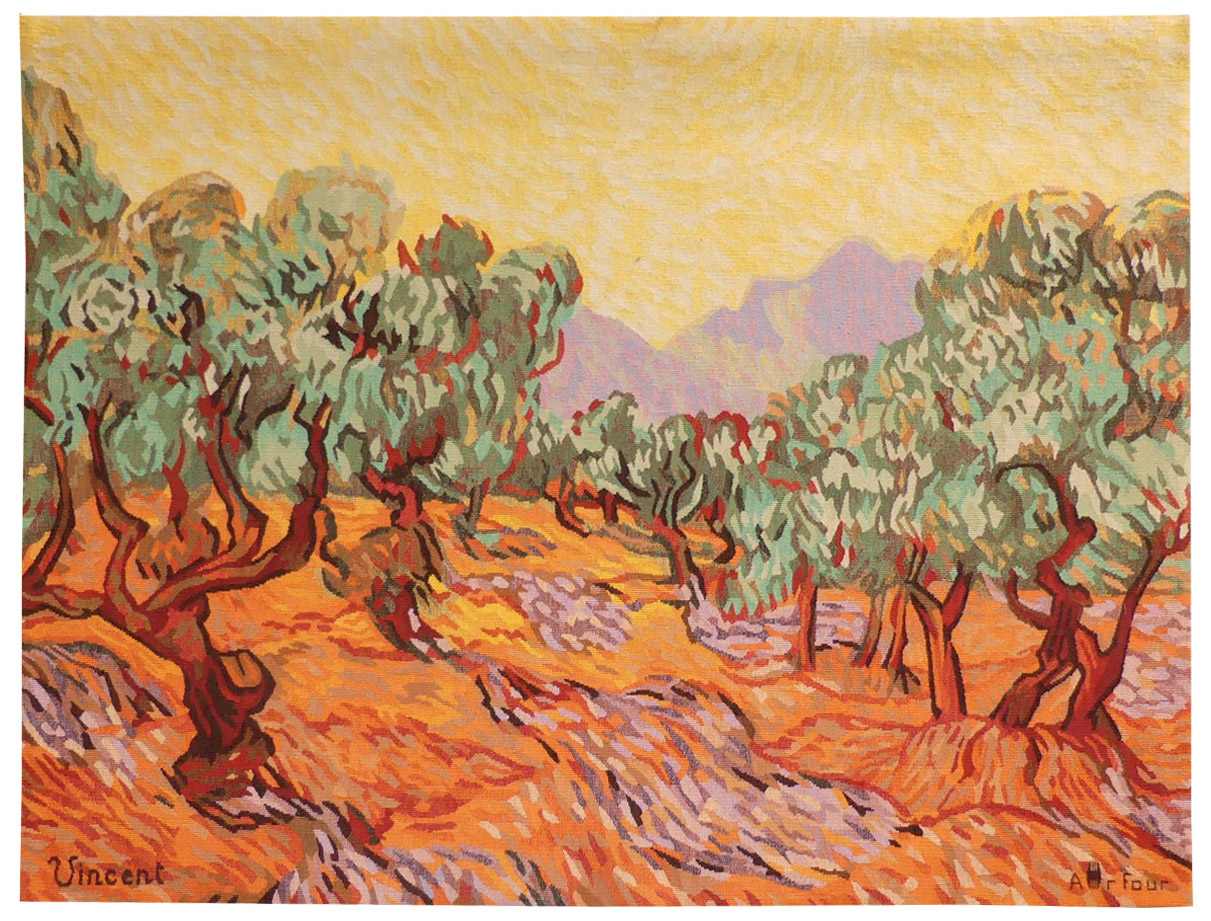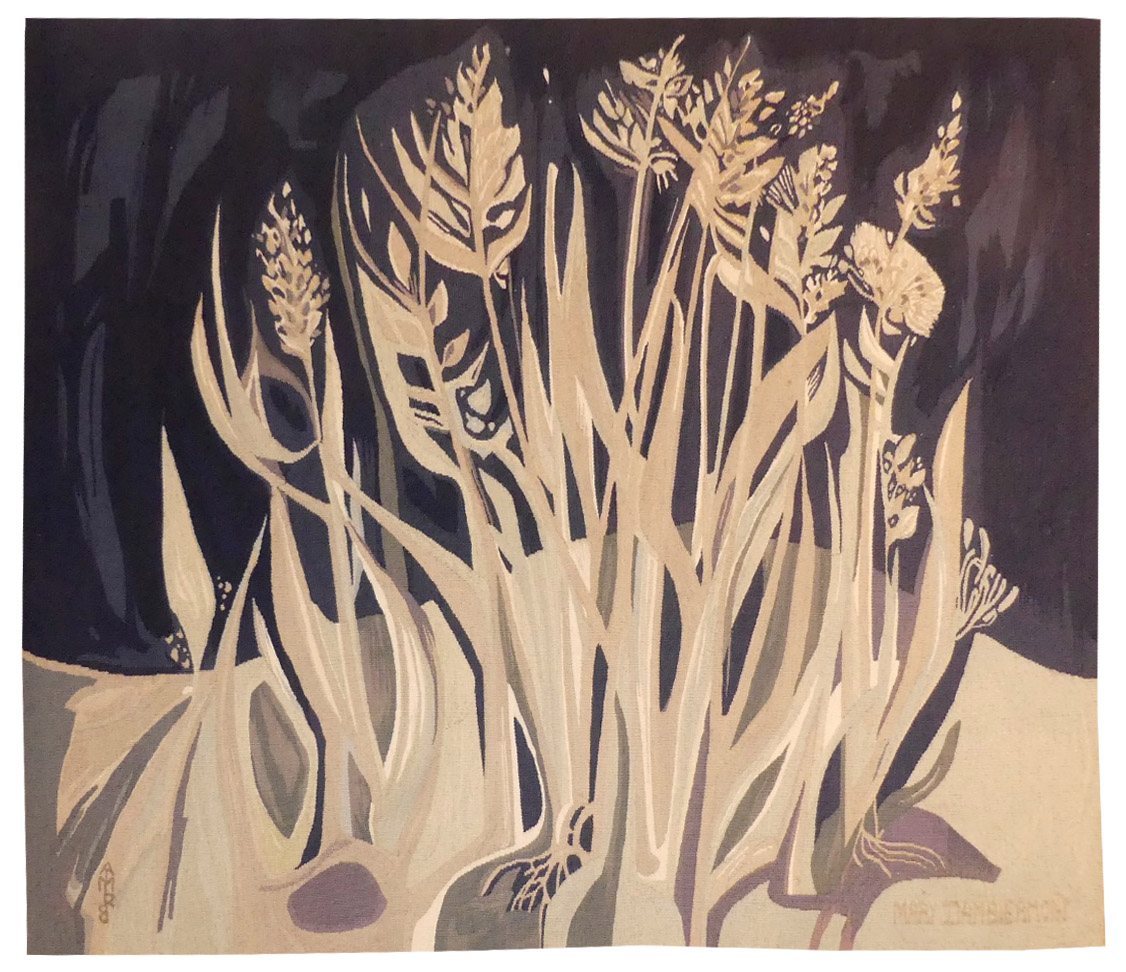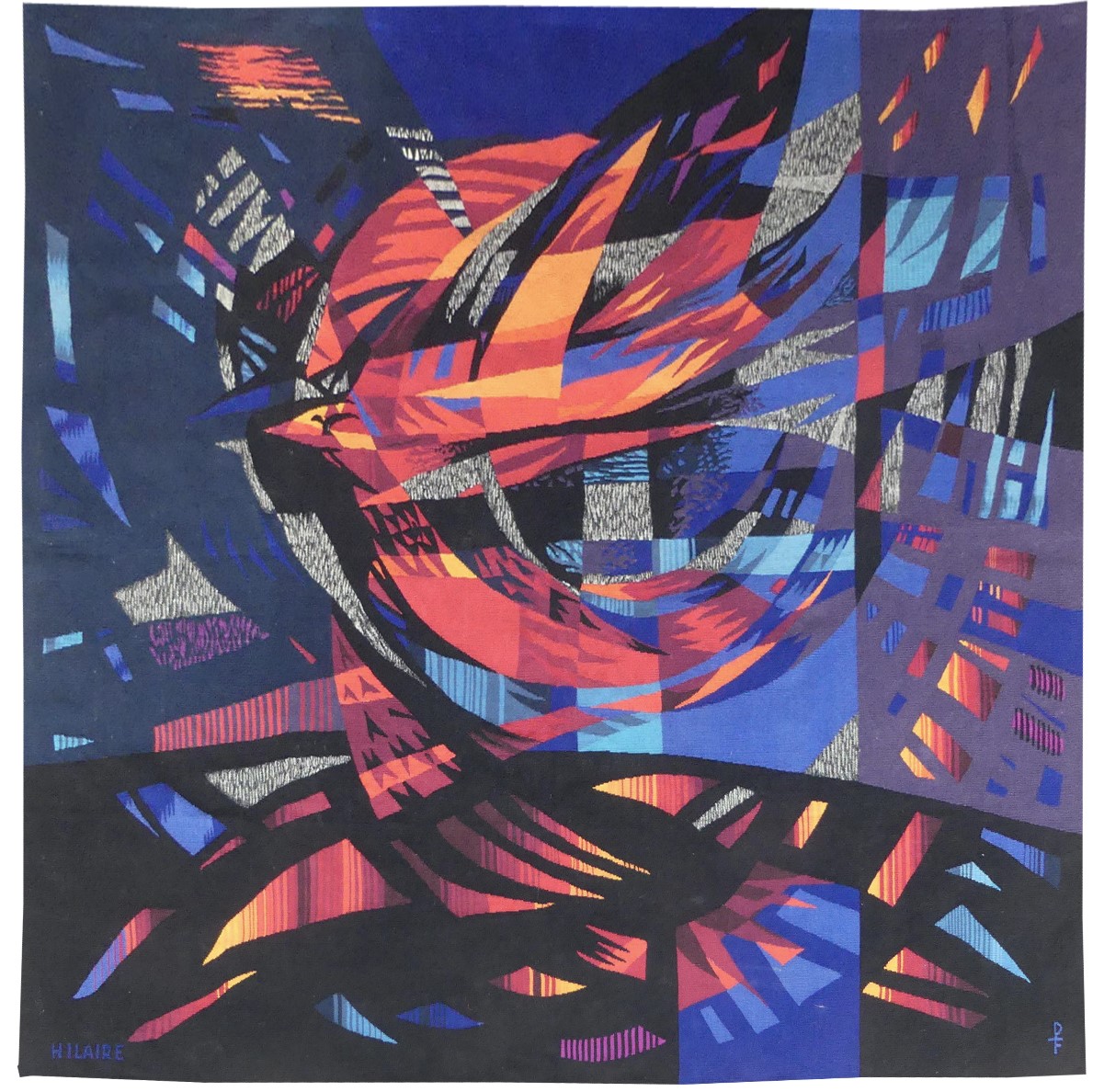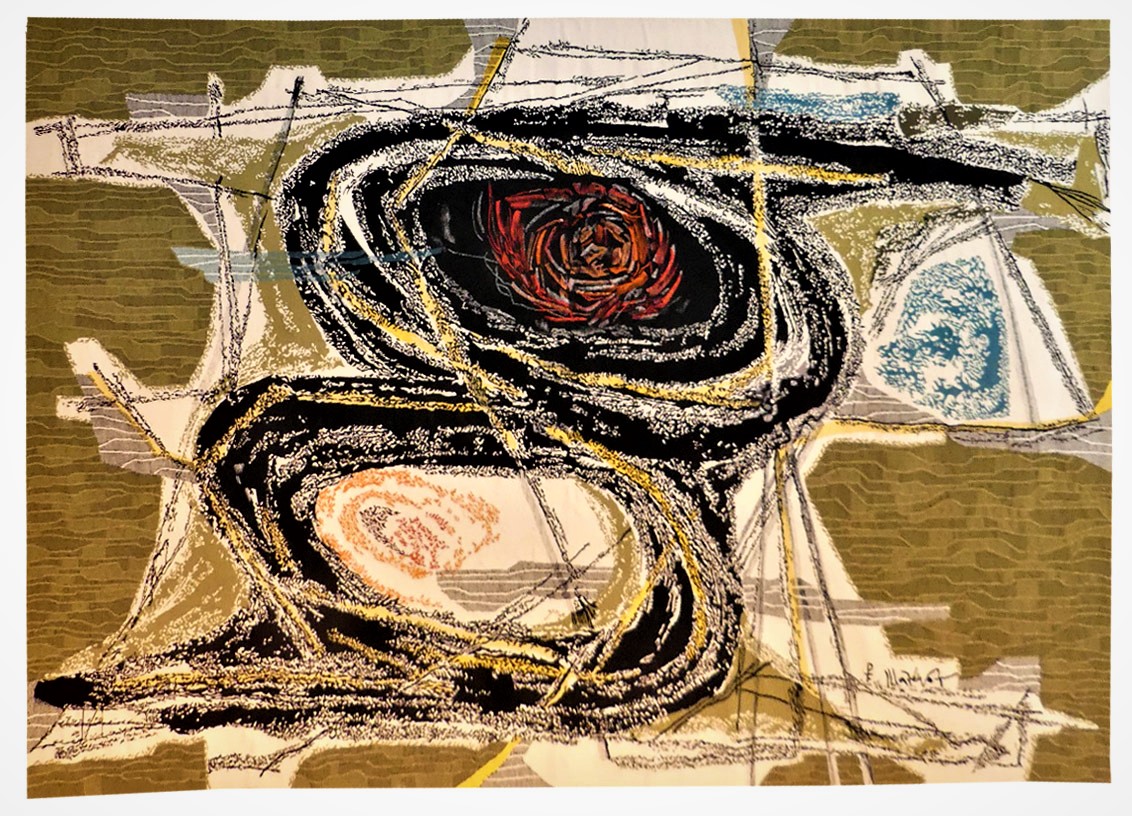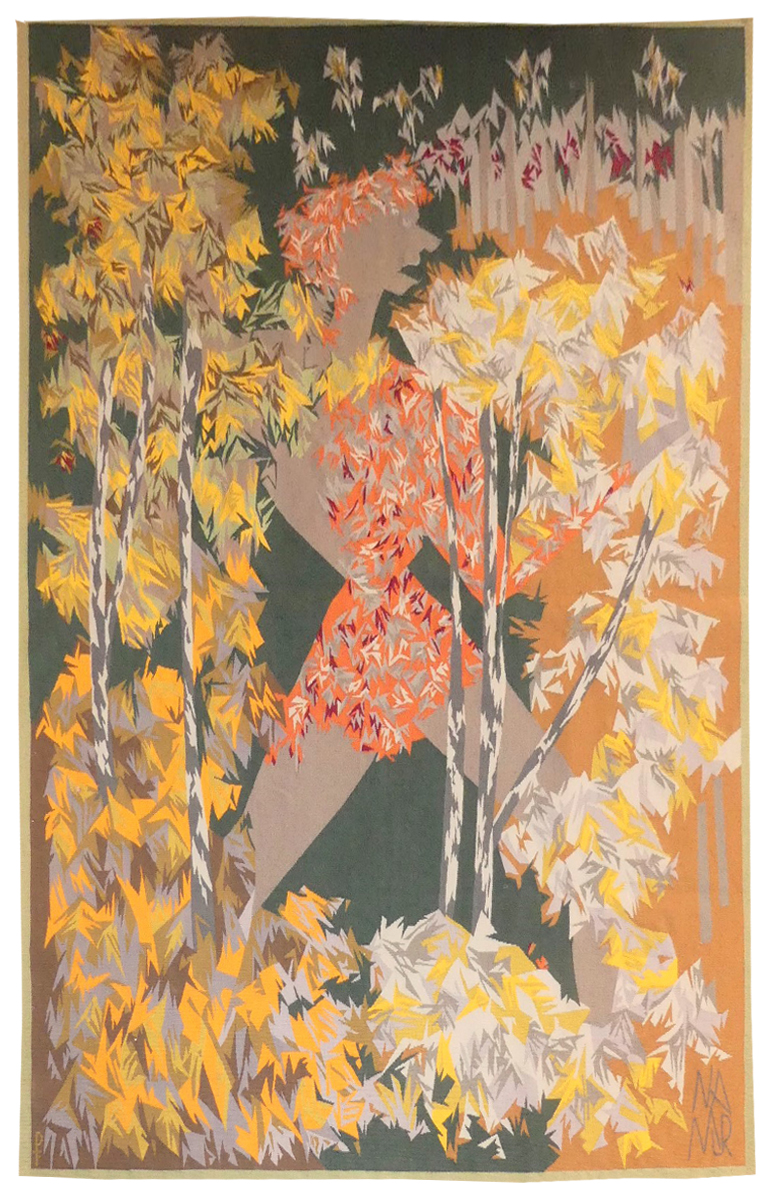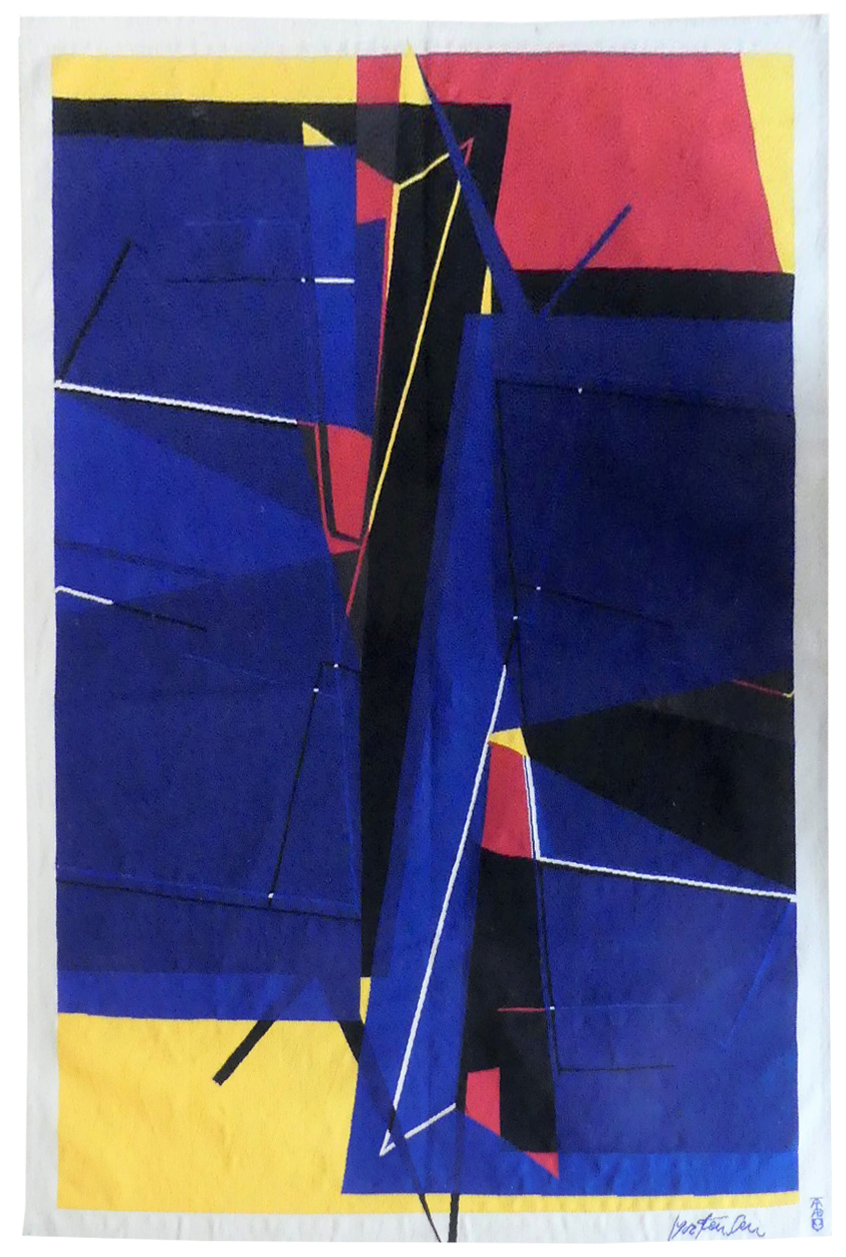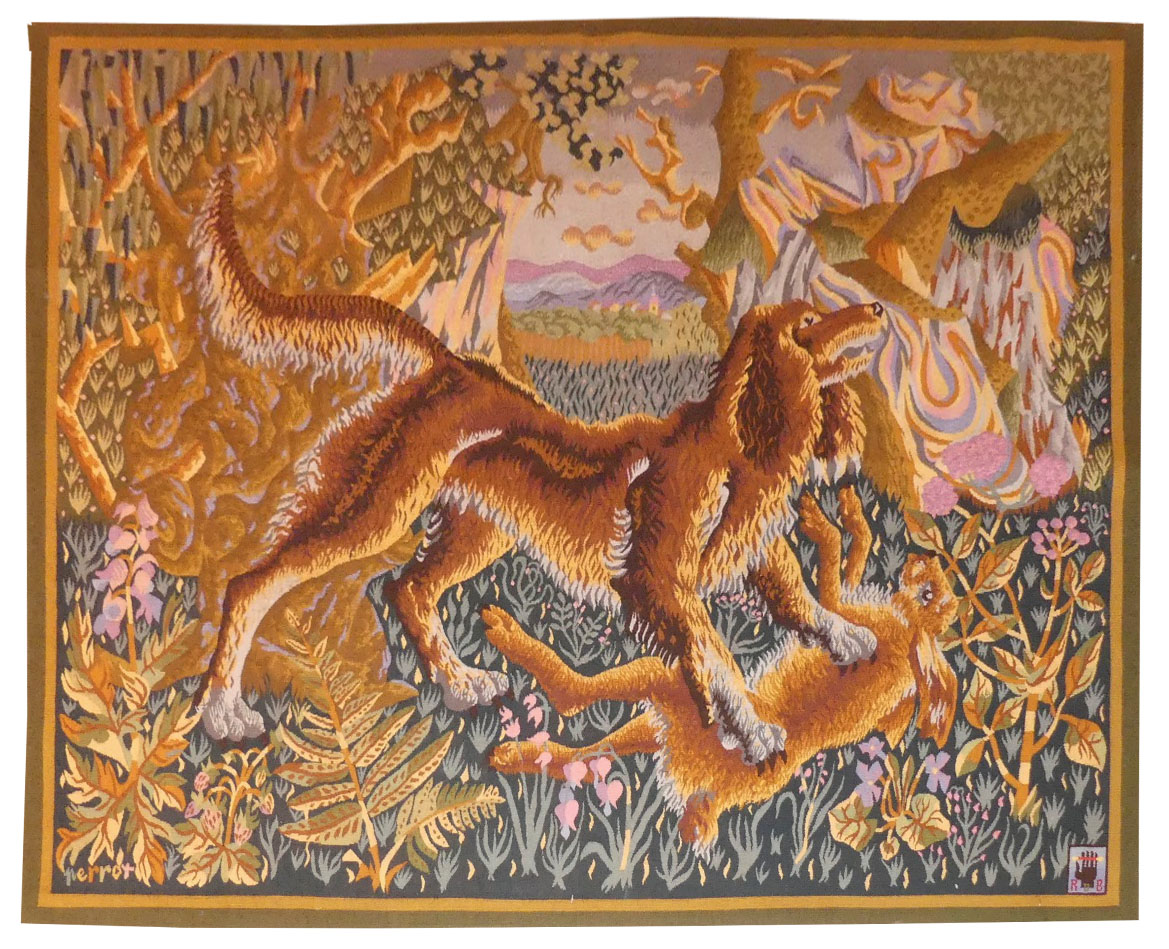Saint-Mars (composition blues black yellow red white)
Aubusson tapestry woven in the Tabard workshop..
With label.
1963.
From early on in his career, Mortensen, favoured an abstract painting style. He settled in Paris in 1947 and showed his works, with other artists also inclined to geometric abstraction, at the Denise René gallery. In 1952 under the aegis of François Tabard and Vasarely an exhibition titled « 12 original tapestries » opened at the gallery where, in the company of Le Corbusier and Léger, there appeared works by Deyrolle, Taueber-Arp and Mortensen who thus became the first abstract painters to be reproduced in tapestry and a new art form was born (in this context, it must not be forgotten that this is the period where the “Lurçat style” was absolutely dominant) which Gilioli, Matégot and Tourlière will all subsequently claim as their own. Mortensen’s collaboration with the “René-Tabard tapestries” will last until 1968, even though he returned to his native Denmark in 1964. The 14 works of the artist which will be woven are characterised by his large-scale geometrical compositions, using bright, light and contrasting colours in large expanses of colour, which the weavers of the Tabard workshop reproduce with great success.
« One of the loveliest » of Mortensen’s tapestries according to Valentine Fougère (Tapisseries de notre temps, Paris 1969), « Saint Mars », a somewhat obscure title, derives directly from an engraving from 1962. The style which is wholly geometric, consisting of blocks of primary colour and surrounded by a frame, is characteristic of this artist’s style in the years 1961-2.
This model, which was to be found both at the Mobilier National (bought from the Denise René gallery in 1963) and also at the Cité de la Tapisserie in Aubusson, was woven in 2 sizes : the dimensions of this copy correspond to that mentioned in the Cité.
Origin : Denise René collection
Bibliography :
Madeleine Jarry, la Tapisserie, art du XXe siècle, Fribourg, 1974, ill. n°145
Exhibition catalogue, Aubusson, la voie abstraite, Aubusson, Musée départemental de la Tapisserie, 1993, ill. p.14 (on a photograph of a 1964 exhibition at the Denise René gallery) p.32
Acts of the colloquium, la tapisserie hier et aujourd’hui, Paris, 2011, ill. n°6 p.213
Visitor’s guide, nef des tentures, Cité internationale de la Tapisserie, Aubusson, 2016, ill. p.84


